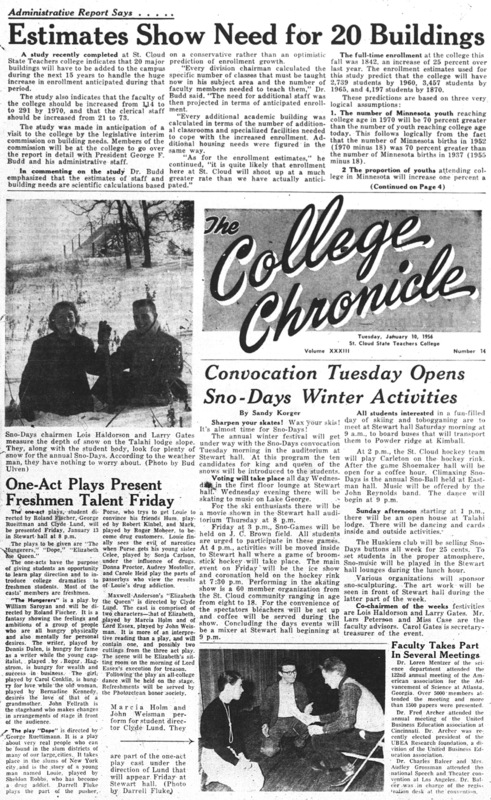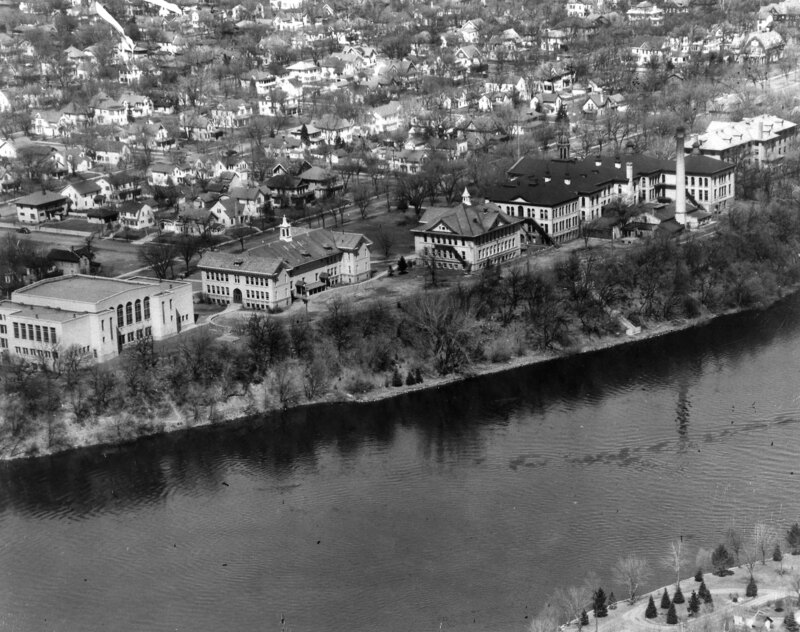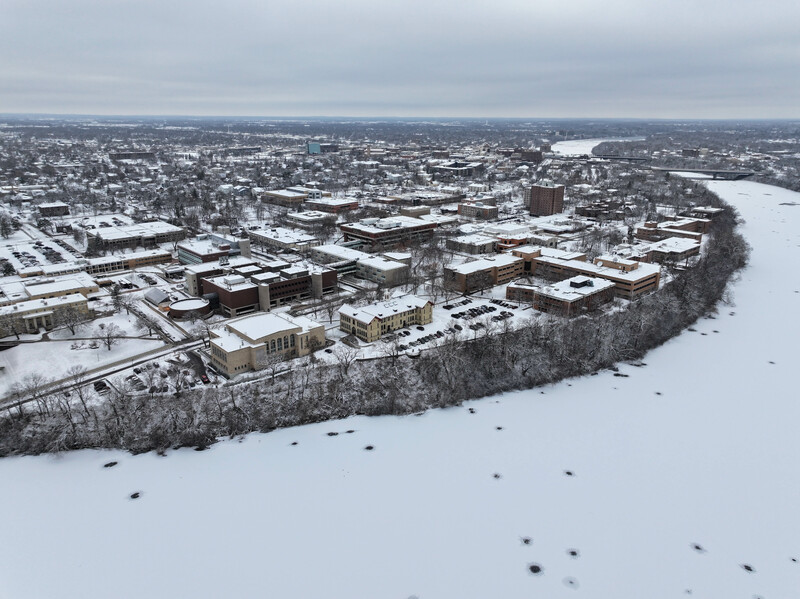Campus Footprint
Estimates Show Need for 20 Buildings – January 10, 1956
After World War II, St. Cloud State began to move beyond teacher education. That change accelerated with the Baby Boomer generation coming of age and attending college. It transformed St. Cloud State from a sleepy teachers college to regional comprehensive university.
If St. Cloud State was to educate students, the physical footprint needed to grow. From the 1958 Mitchell Hall opening to the 1975 opening of the Administrative Services building, campus stretched to Fifth Ave. S. to the west, 15th St. S. to the south, and Fourth St. S. to the north.
During the same time, student enrollment almost tripled from 3,518 to 11,198.
That growth strained relationships with the city, especially those who lived near campus. The surrounding neighborhood was gradually purchased by the state to accommodate physical expansion - displacing residents and their families.
The building boom changed how students learned, were taught, and where they lived. It signaled the days of a teachers college were over while the dynamics of the neighborhood forever altered.


